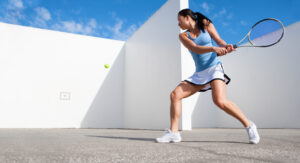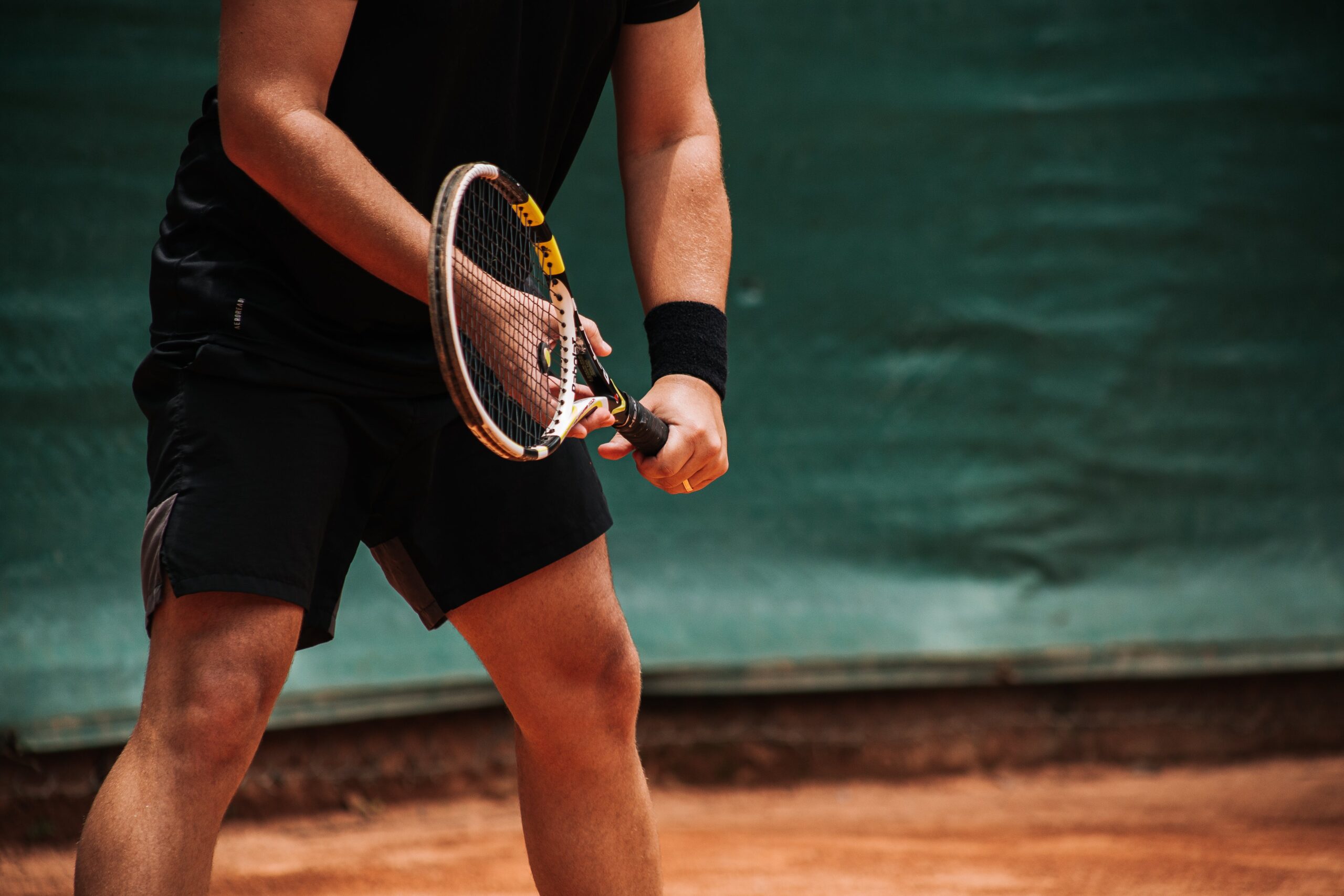
Introduction
Are you new to tennis and eager to learn the basic positions that will set you on the path to becoming a skilled player? Look no further! In this article, we will guide you through the essential tennis positions every beginner should know. Whether you’re playing singles or doubles, understanding these positions is crucial for effective gameplay and coordination with your partner.
Key Highlights:
- The baseline position is fundamental, offering a full view of the court and ample reaction time for beginners.
- At the net, players should adopt a split-step stance for better balance and quick reactions to volley effectively.
- Serving is key in setting the point’s pace, requiring a balanced stance and practice in various serve types for effectiveness.
- Doubles play involves distinct positions such as the net player and baseline player, requiring coordination and quick reflexes.
- Transitioning smoothly between positions is crucial; it involves strategic forward and backward movements depending on the play.
- Common positioning mistakes include standing too close to the net or remaining at the baseline, which can be mitigated through practice and analysis.
Understanding the Baseline Position
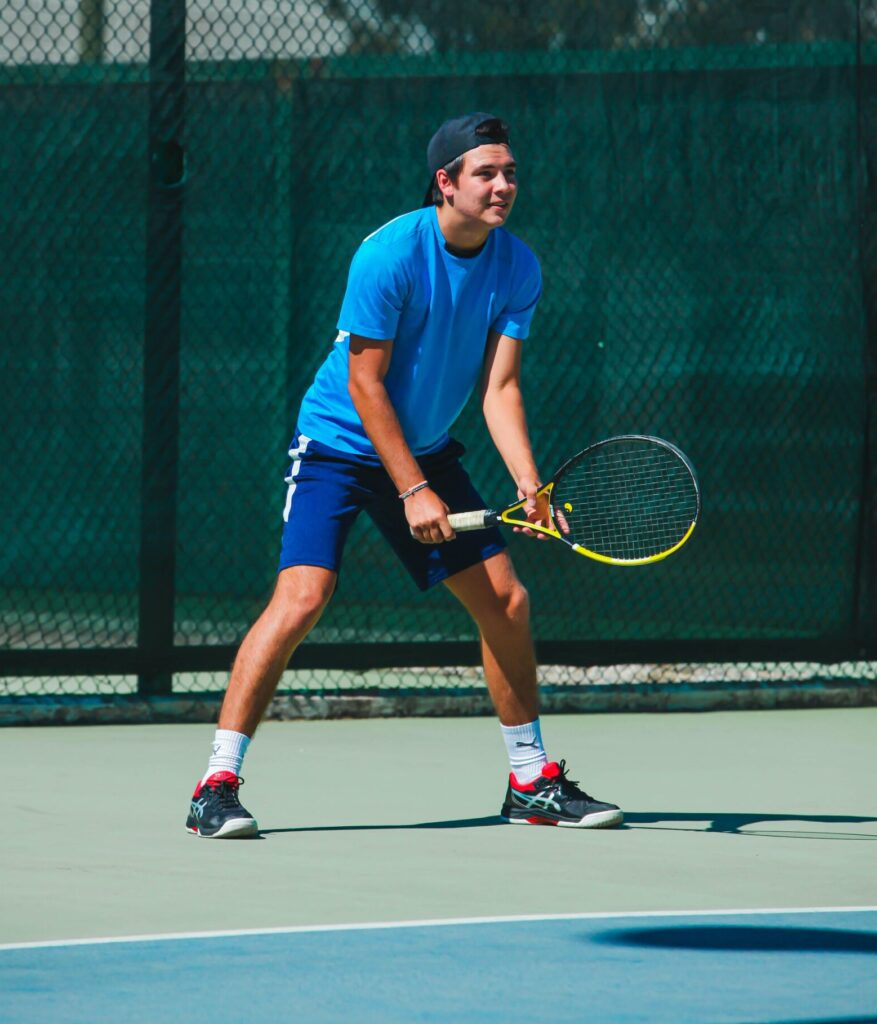
The baseline position is where most beginners start their tennis journey. Positioned at the back of the court, the baseline is the dividing line between the service box and the court’s outer boundaries. This position allows players to have a better view of the court and gives them ample time to react to their opponent’s shots.
When you’re at the baseline, it’s important to maintain a balanced stance with your feet shoulder-width apart. This allows you to quickly move in any direction to return your opponent’s shots. Additionally, keeping your knees slightly bent and your weight evenly distributed on both feet will help you maintain stability and react swiftly.
To effectively play from the baseline, you should focus on hitting shots deep into your opponent’s court, aiming for the area between their service line and baseline. By doing so, you can put pressure on your opponent and force them to make difficult shots. Remember to stay patient and wait for the right opportunity to go for a winner. Consistency and control are key when playing from the baseline.
The Importance of the Net Position
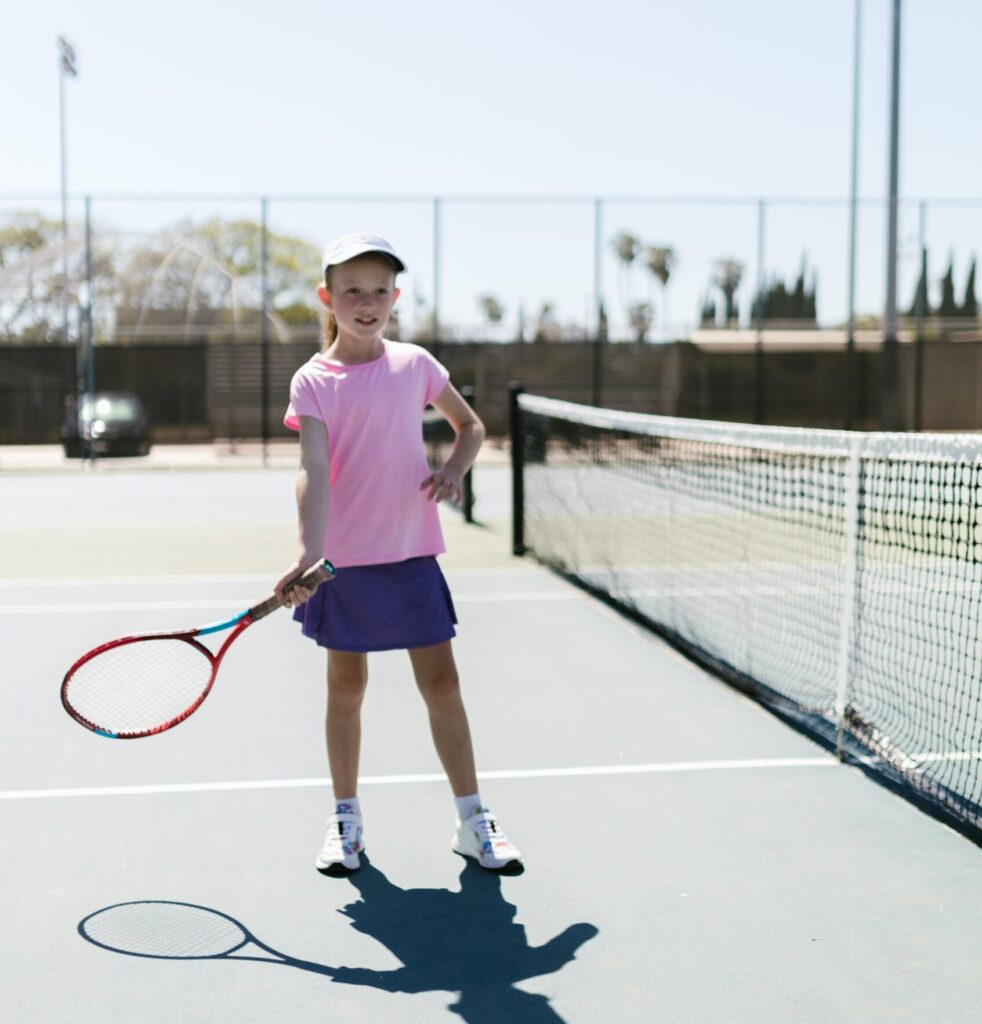
While the baseline position is essential, understanding the net position is equally important, especially if you want to take your game to the next level. The net position is located near the middle of the court, just a few feet away from the net. This position allows you to be more aggressive and take control of the point.
Being at the net puts pressure on your opponent as it reduces their reaction time and limits their shot options. When at the net, you should maintain a split-step position, which involves jumping slightly off the ground to prepare for your opponent’s shot. This helps you stay balanced and react quickly to incoming shots.
One of the primary objectives of being at the net is to intercept your opponent’s shots and hit volleys. Volleys are shots that are hit before the ball bounces on the ground. To execute a successful volley, keep your racket head up and your wrists firm. Focus on making contact with the ball in front of your body and aim for the open areas of the court.
The Role of the Server in Tennis
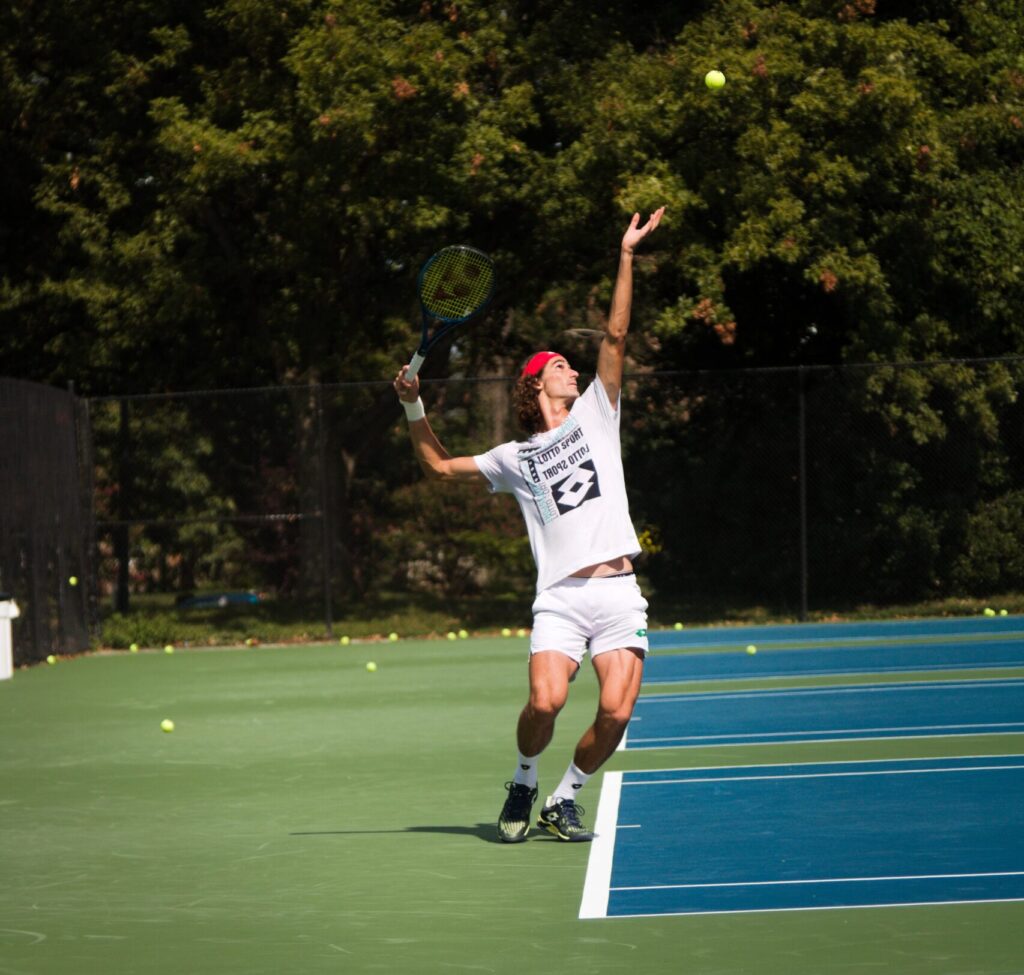
The server position is crucial in tennis, as it sets the tone for each point. When serving, you have the advantage of starting the point with your opponent at a disadvantage. To maximize the effectiveness of your serve, you need to understand the key elements of the server position.
When serving, start with your feet shoulder-width apart and your weight evenly distributed. Hold the ball in your non-dominant hand and grip the racket with your dominant hand. Position yourself behind the baseline, with one foot slightly ahead of the other. This stance allows you to generate power and accuracy when serving.
To execute a proper serve, use a fluid motion that involves tossing the ball in the air, transferring your weight forward, and accelerating your racket towards the ball. Aim to hit the ball at the highest point of your reach and follow through with your swing. Practice different types of serves, such as flat, slice, and topspin, to keep your opponents guessing.
Understanding the Different Positions in Doubles Play
Doubles play introduces additional positions and strategies compared to singles play. In doubles, there are two teams of two players each, and each player has a specific role on the court. Understanding these positions is crucial for effective teamwork and coordination with your partner.
The first position in doubles is the server’s partner, also known as the net player. This player stands near the net, on the same side as the server, and their primary goal is to intercept volleys and put pressure on the opposing team. The net player should be ready to react quickly and cover any gaps left by their partner.
The second position in doubles is the baseline player, also known as the server’s partner. This player stands near the baseline, on the same side as the server’s partner. Their primary responsibility is to cover the back of the court and hit shots deep into the opponents’ court. The baseline player should have good court coverage and be prepared to defend against aggressive shots.
Transitioning Between Different Tennis Positions
As a beginner, transitioning between different tennis positions can be challenging. However, with practice and understanding, you can develop the skills needed to smoothly move from one position to another.
When transitioning from the baseline to the net, focus on moving forward quickly after hitting a deep shot. Take small steps towards the net, keeping your eyes on the ball at all times. As you approach the net, be ready to intercept any shots from your opponent and hit volleys.
When transitioning from the net to the baseline, prioritize getting back to the baseline quickly after hitting a volley. Move backward while maintaining a balanced stance, and be ready to defend against any shots from your opponents. Remember to communicate with your partner and cover the appropriate areas of the court.
Common Mistakes to Avoid in Tennis Positions
While learning tennis positions, it’s important to be aware of common mistakes that can hinder your progress. By avoiding these mistakes, you can improve your performance and become a more effective player.
One common mistake is standing too close to the net during doubles play. This can leave you vulnerable to shots hit behind you, forcing you to scramble to recover. To avoid this, maintain an appropriate distance from the net and be ready to move quickly in any direction.
Another mistake is staying planted at the baseline without moving forward. To take advantage of short balls or weak shots from your opponent, be prepared to move closer to the net and take control of the point.
Tips for Improving Your Tennis Positioning
To improve your tennis positioning, consider implementing the following tips into your practice routine:
- Work on your footwork: Developing quick and efficient footwork is essential for moving around the court and getting into the right positions. Incorporate ladder drills, cone drills, and agility exercises into your training to improve your speed and coordination.
- Anticipate your opponent’s shots: Pay close attention to your opponent’s body language, racket position, and shot selection. By anticipating their shots, you can position yourself in the most advantageous spot on the court.
- Communicate with your partner: In doubles play, effective communication with your partner is crucial. Use hand signals, verbal cues, and eye contact to coordinate your movements and ensure you both cover the court efficiently.
- Analyze your positioning after each point: Take the time to reflect on your positioning after each point. Did you find yourself out of position? Were you too close or too far from the net? Analyzing your positioning will help you identify areas for improvement and make adjustments for the next point.
Practicing and Mastering Tennis Positions
Practicing tennis positions is essential to mastering the game. Incorporate the following drills into your training routine to improve your skills:
- Baseline rallies: Practice hitting deep shots from the baseline and focus on maintaining consistency and control. Rally with a partner or use a ball machine to simulate game-like situations.
- Net drills: Work on your volleys and reflexes by practicing various net drills. These drills can involve hitting volleys back and forth with a partner or performing reaction drills using a ball machine.
- Transition drills: Practice transitioning between different positions on the court. Start at the baseline, hit a deep shot, and quickly move to the net to hit a volley. Repeat this drill multiple times to improve your movement and coordination.
- Doubles match play: Participate in doubles matches to apply your skills in a competitive environment. This will help you develop a better understanding of positioning, teamwork, and strategy.
Remember, mastering tennis positions takes time and dedication. Be patient with yourself and focus on continuous improvement. With consistent practice and a willingness to learn, you’ll soon become a confident and skilled player on the court.
Conclusion: The Importance of Mastering Tennis Positions for Success on the Court
Mastering basic tennis positions is a crucial step towards becoming a successful player. Whether you’re a beginner or an aspiring professional, understanding the baseline, net, and service positions is essential for effective gameplay and coordination with your partner.
By familiarizing yourself with these positions and practicing the accompanying strategies, you’ll develop a strong foundation for your tennis journey. Remember to focus on your footwork, anticipate your opponent’s shots, and communicate effectively with your partner. With time, dedication, and a commitment to continuous improvement, you’ll unlock your full potential and achieve success on the tennis court.
So, don’t be discouraged if you make mistakes along the way. Even the greatest players started as beginners. Stay determined, practice diligently, and soon you’ll be acing your way to victory. Get ready to step up your game and unleash your full potential on the court!

